Mature Size: Up to 20 feet tall
USDA Hardiness Zone: 5-8
Light: Full sun to partial shade
Sign up and enjoy these benefits:
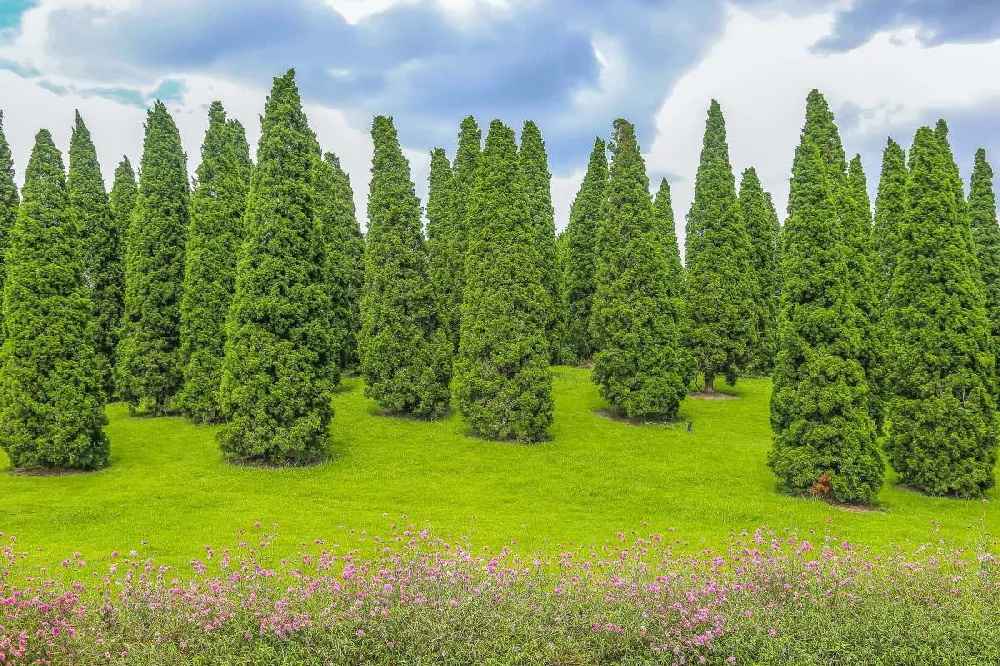
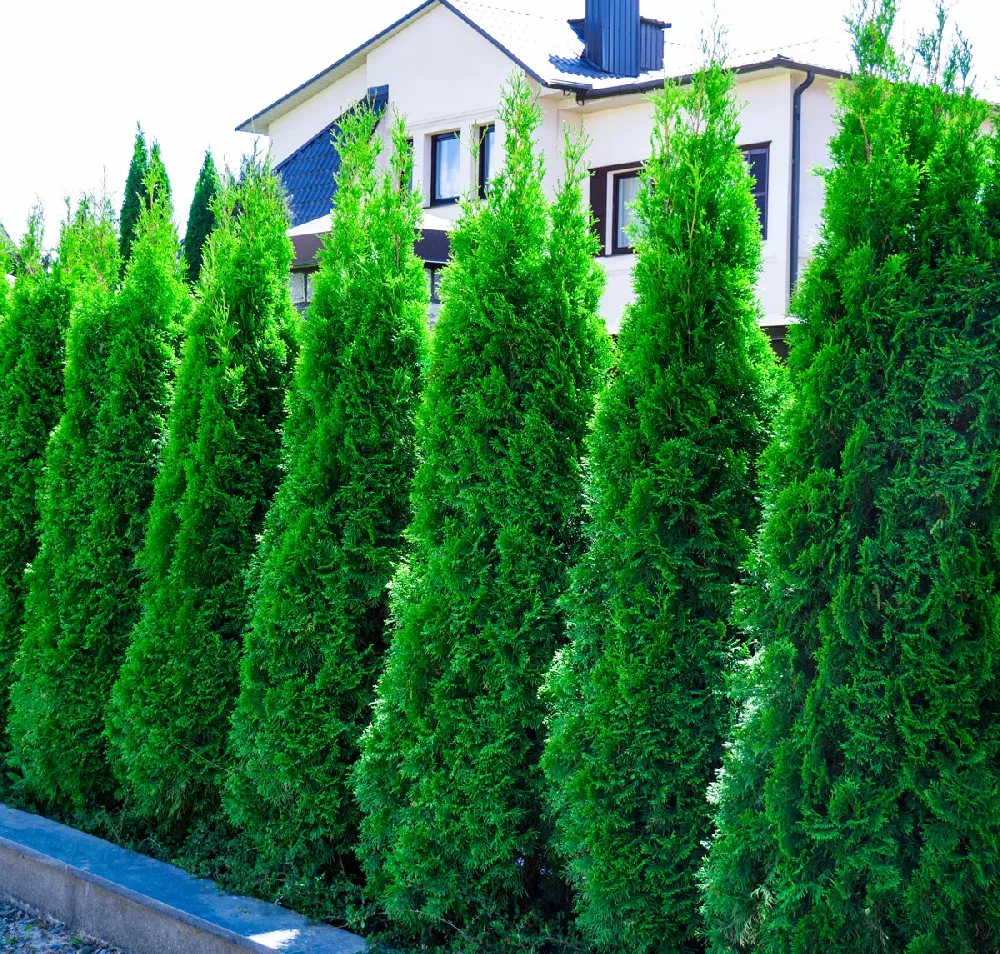
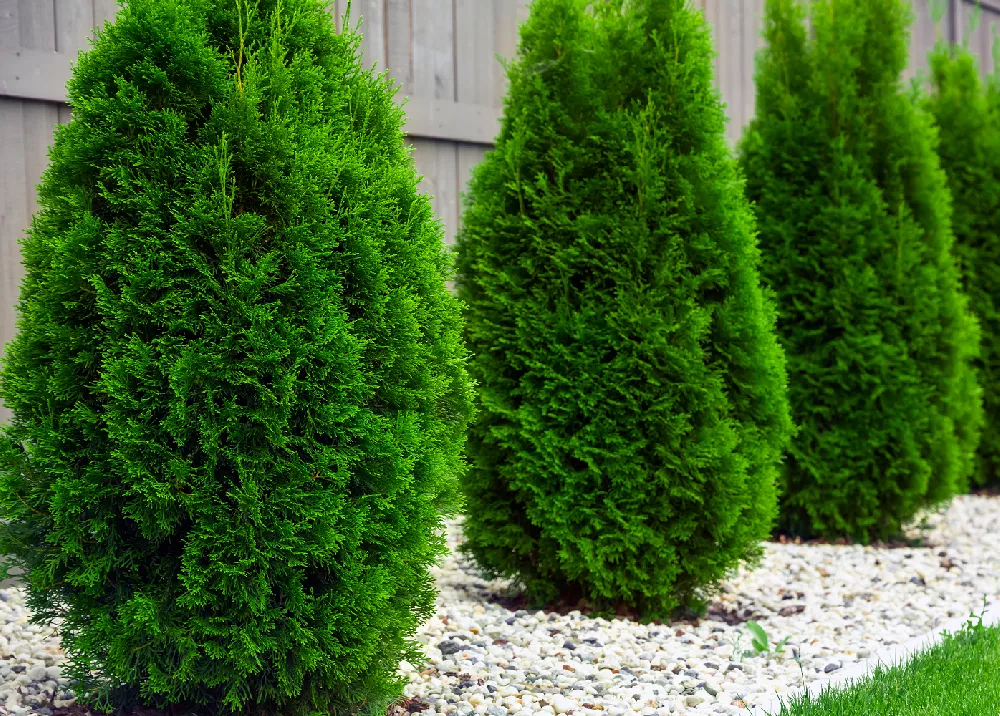
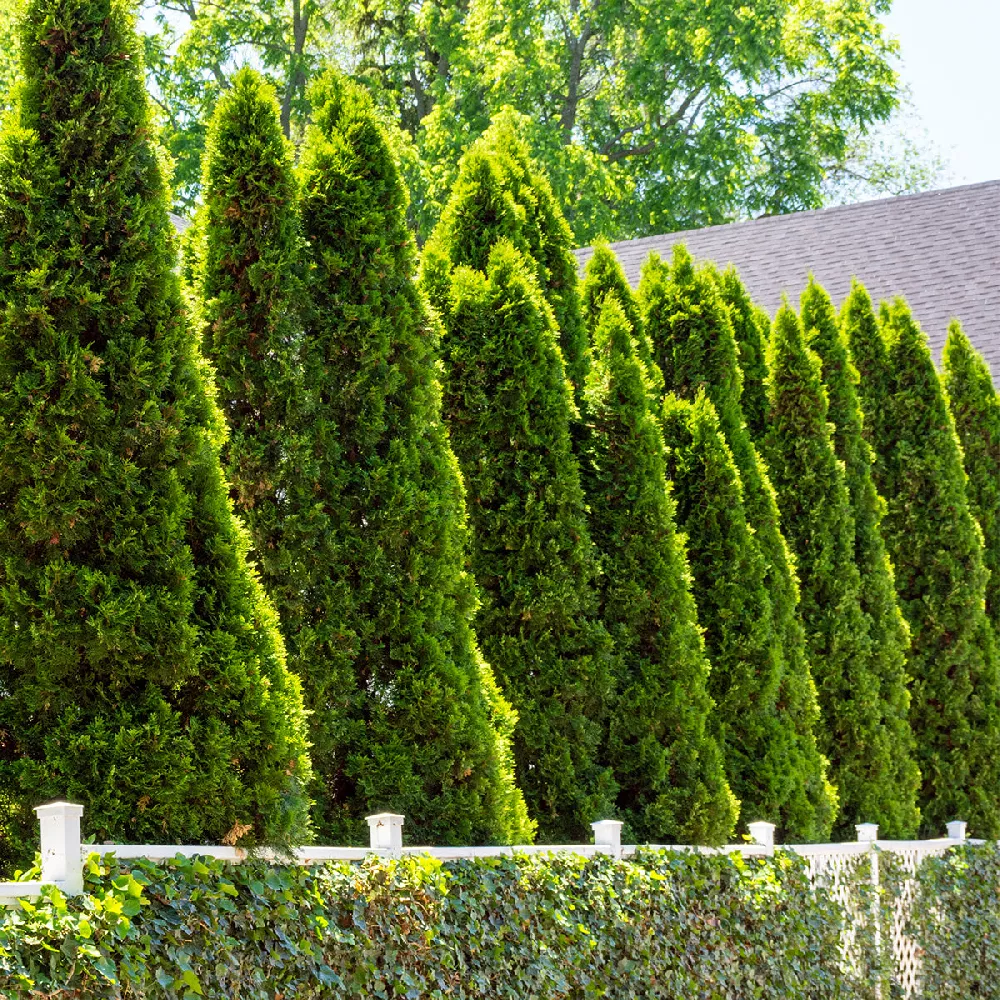
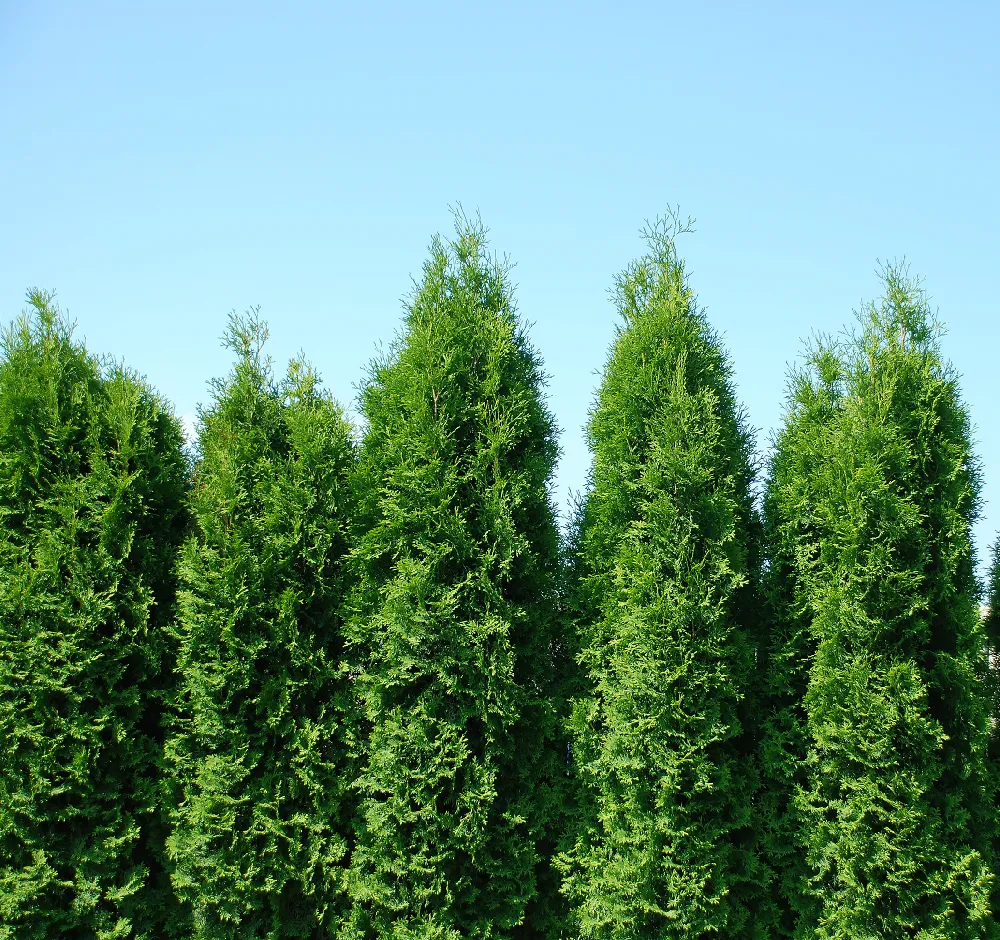
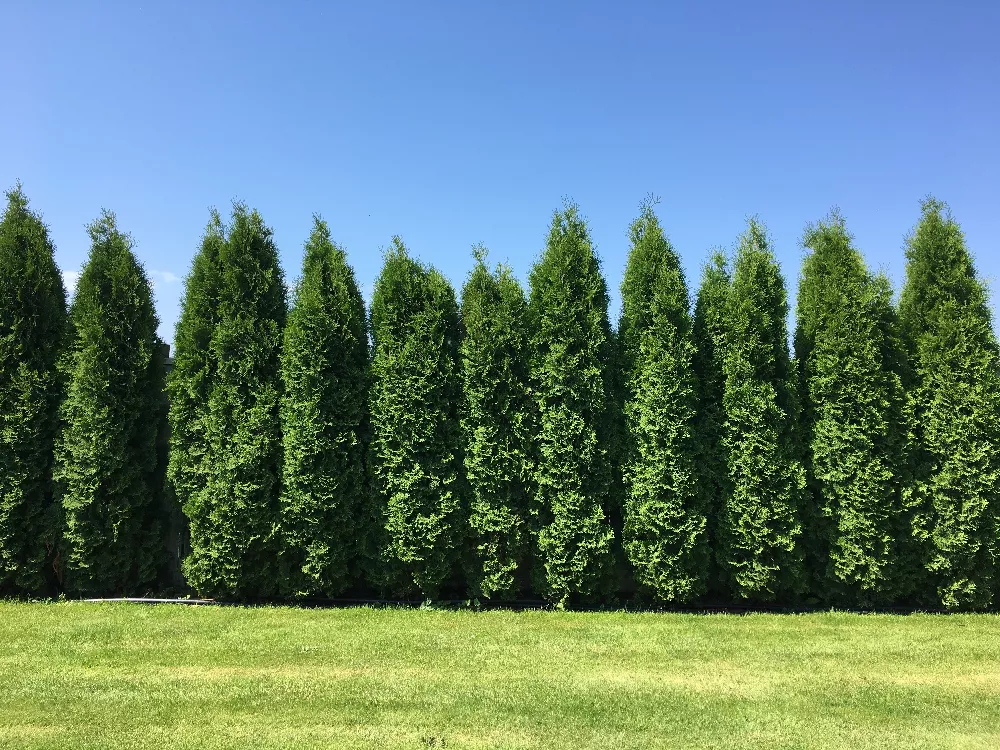
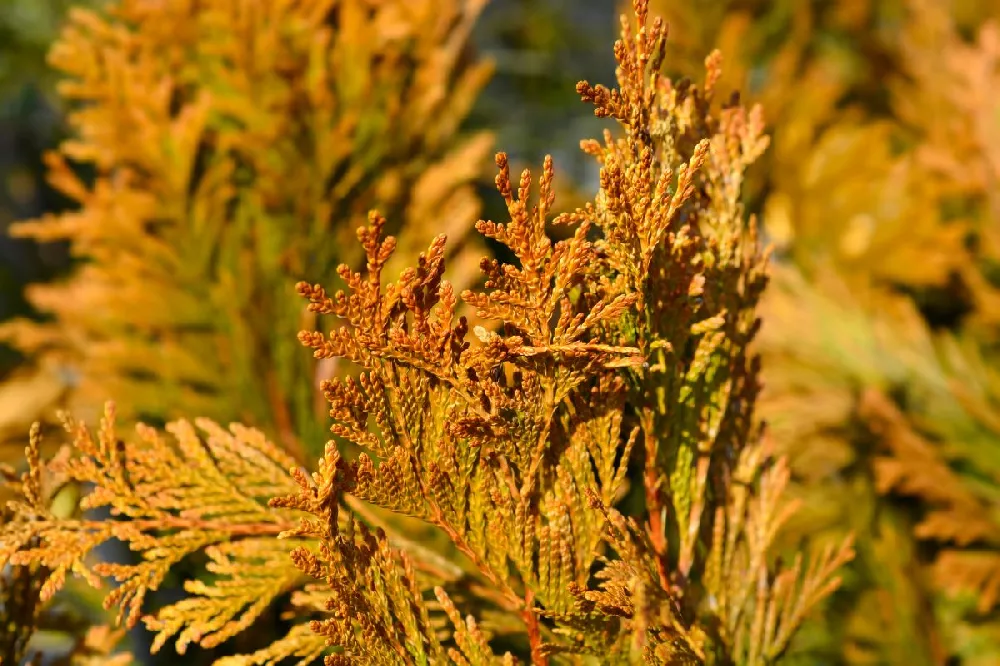
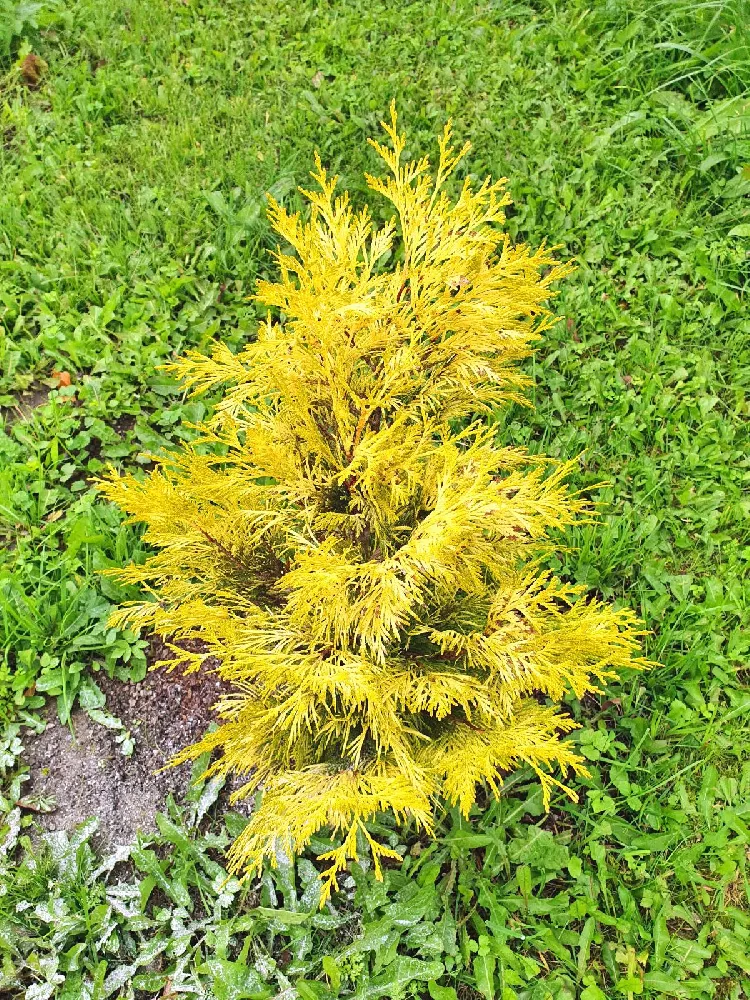
Thuja, to give it its common name, is an evergreen with many purposes. Grow it for the simple beauty of its carpet-like branches, plant multiple to serve as a privacy fence, or place a stand of arborvitae in a prevailing wind area to create a warmer microclimate on the far side.
Arborvitae, also known as thuja or Eastern white cedar, is a versatile evergreen that likes moist, well-drained soil in full sun, though it can handle partial shade. The tree will grow in all of the continental United States, and is hardy to USDA Hardiness Zone 3. It can handle soil pH levels of 6.0 to 8.0, and likes a good amount of compost or other organic material worked into the soil where its planted. For best results, plant your arborvitae tree in late winter to early spring.
To plant, dig a hole that’s twice as wide and deep as the root ball. Dig compost or shredded leaves into the bottom of the hole. Upwrap or unpot your tree, and prune or tease out any roots that are circling the root ball. Place the tree in the hole with the roots spread out, and backfill with compost-amended soil. If you are planting multiples, note the mature width of the tree and make allowances for proper spacing.
Water deeply and frequently for the first six months, after which you can begin to back off. During the summer months, don’t let the soil get parched and dry. A layer of mulch around the trunk will help cut down on weeds.
It’s not hard to get maximum results with arborvitae trees: they are tough and easy-care, and are a good plant for a beginning gardener to work with. Arborvitae is a member of the cypress family, and is native to North America. Unless you live in the tropical South or most northern climes of the continent, you should have no trouble growing healthy arborvitaes, as long as they are consistently watered when young and fertilized occasionally.
Once your arborvitae is established, it will need infrequent watering. In most areas, rainfall will be enough for the trees, but if you are experiencing drought or very dry conditions, deep supplemental watering will help the plant to thrive in less-than-ideal conditions.
Arborvitae don’t need much in the way of added nutrients if they are planted in fertile soil, but a spring application of a general-purpose, slow-release landscape fertilizer won’t hurt them and will make for more robust growth during the summer.
Arborvitae are monoecious, which means that each plant has both male and female characteristics. It produces cones rather than flowers in the spring, which are pollinated by wind. In early fall, the female cones will produce small winged seeds that are blown off the tree during windy fall weather.
Prune your arborvitae in early spring, before growth starts. Generally, you only need to prune lightly to shape the plant and remove dead or diseased branches, taking out less than 10 percent of the tree’s branch length. In fact, heavy pruning may result in bald spots that will spoil the look of your tree. To trim the tree’s height, cut above a spot where the branch meets a shoot. As you prune, step away frequently to check your progress — it’s easy to get carried away and end up with a lop-sided tree.
Bagworm is a common arborvitae pest, as are spider mites and aphids. Organic insecticides can help control infestations. You may also want to encourage beneficial insects such as ladybugs, which feed on aphids.
Arborvitae are robust plants with few diseases. Tip blight is the result of a fungus that causes outer leaves to go yellow or brown. Molds and mildews can be controlled with a fungicide. In the southern and western U.S., sun scorch can be a problem; planting in a site with partial afternoon shade will mitigate this.
Unfortunately, deer like to nibble on arborvitae in the winter, and some owners wrap their smaller and younger trees in burlap to avoid this possibility.
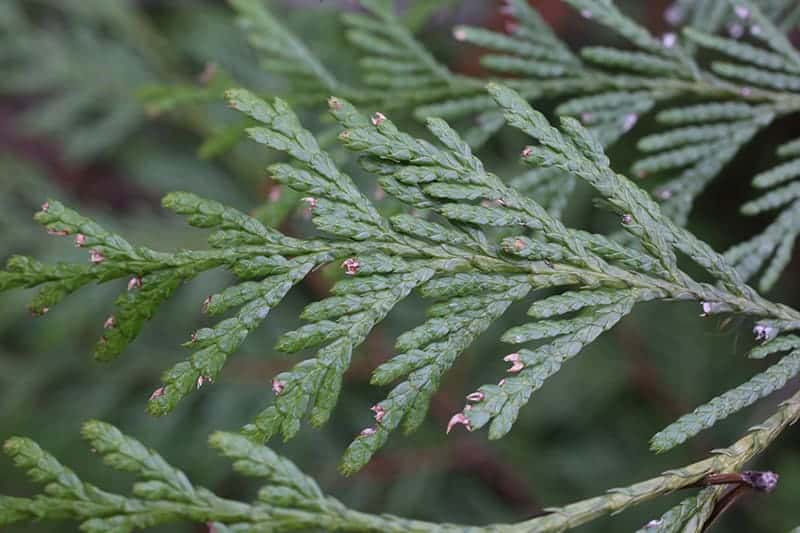
Scientific Name: Thuja plicata
Mature Size: Up to 10 feet tall
USDA Hardiness Zone: 5-8
Light: Full sun
Water: Average water needs
Soil: Well-draining, fertile
This evergreen plant grows in a narrow pyramid shape, forming a slender silhouette with no pruning necessary. It produces dense, fluffy foliage which emerges in a glowing shade of yellow, developing into a medium green as it ages, and then remaining attractive all year round.
This arborvitae is sometimes commonly known as ‘British Columbia Cedar,’ ‘Western Red Cedar,’ and ‘Californian White Cedar,’ as it is native to the Pacific Northwest, although it is not a true cedar at all. It grows well in full sun, though in milder climates would benefit from some afternoon shade. It thrives in regions with cool summers and regular rainfall, as it cannot tolerate dry soil. Water the plant generously from a young age, as dry conditions can cause it to die. It works well as a specimen plant, but can also be grown in a row to form a hedge or privacy border.
Golden arborvitae is a category of Thuja trees that have golden-yellow foliage all year round, rather than the medium to dark green foliage of most other arborvitae trees. As evergreen trees, these plants bring a welcome burst of color to the winter garden when most plants have either lost their leaves or remain green. Most prefer moist and well-draining soils, though some are suitable for growing in wet and boggy soils. They will not tolerate drought.
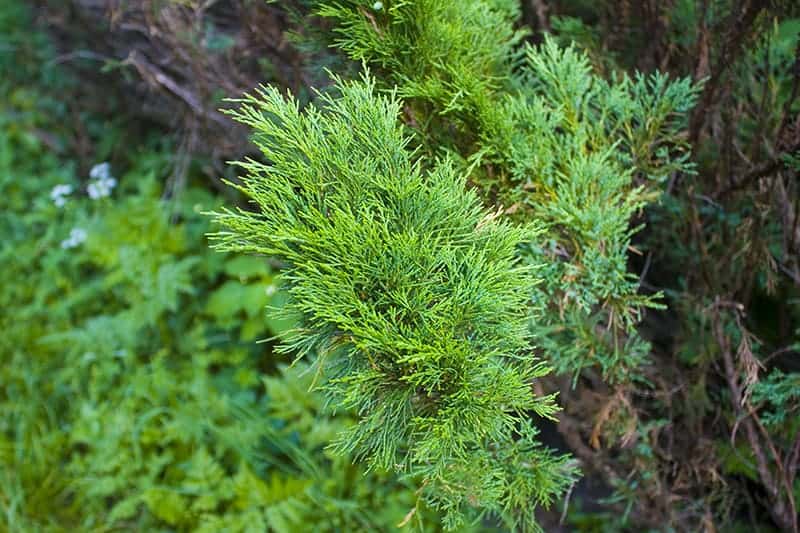
Mature Size: Up to 20 feet tall
USDA Hardiness Zone: 5-8
Light: Full sun to partial shade
This hardy evergreen produces golden-green foliage, which persists all year round without fading to bronze when the temperatures drop. It has a tight and dense narrow pyramidal habit, though the branches will become less dense if the plant does not receive enough sun. That being said, it would appreciate a few hours of shade on summer afternoons.
Though this plant thrives in well-draining soil, it can survive in a wide range of soil types, including boggy conditions, so it is suitable for planting in wet areas such as along a riverbank or in swampland. This stunning tree is popular as a specimen plant, but it can also work well in rows to form a tall hedge.
Credit to メルビル
Mature Size: Up to 5 feet tall
USDA Hardiness Zone: 2-7
Light: Full sun to partial shade
This arborvitae produces pink-yellow foliage that develops to an orange-yellow for fall and winter. It has a slow growth habit and is a dwarf variety, typically only reaching between three and five feet in height. It tolerates a wide range of soil conditions, but will not survive in dry soils. The trees flat foliage fans out on the branches, all coming together to form a dense cone shape (Missouri Botanical Garden).
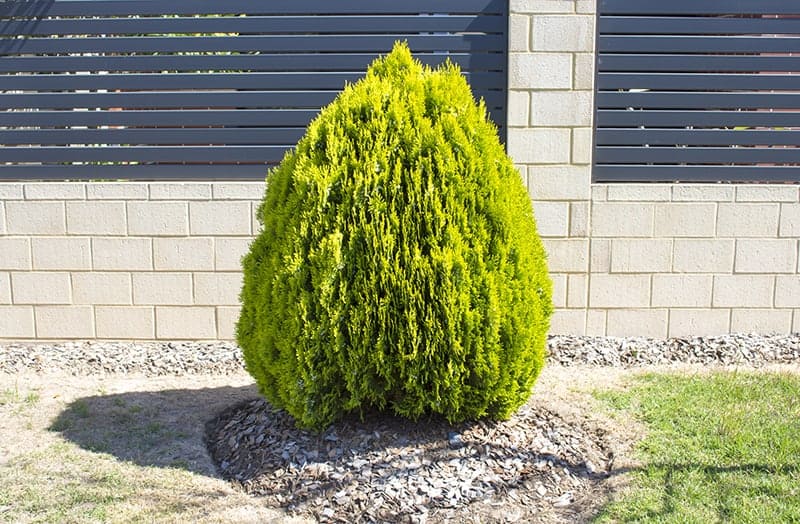
Mature Size: Up to 6 feet tall
USDA Hardiness Zone: 6-8
Light: Full sun
Also known as Dwarf Golden Oriental Thuja, this plant is native to Korea and China. It is less hardy than most arborvitae trees, but like many of its cousins, it enjoys full sun. It will tolerate a range of soil types, and though it does prefer moist conditions, it can survive in drought. This tree has a dwarf habit, reaching a maximum of 6 feet in height. The foliage is golden-green, with the most vibrant color at the tips. It then develops to a warm orange-yellow at the end of the year.
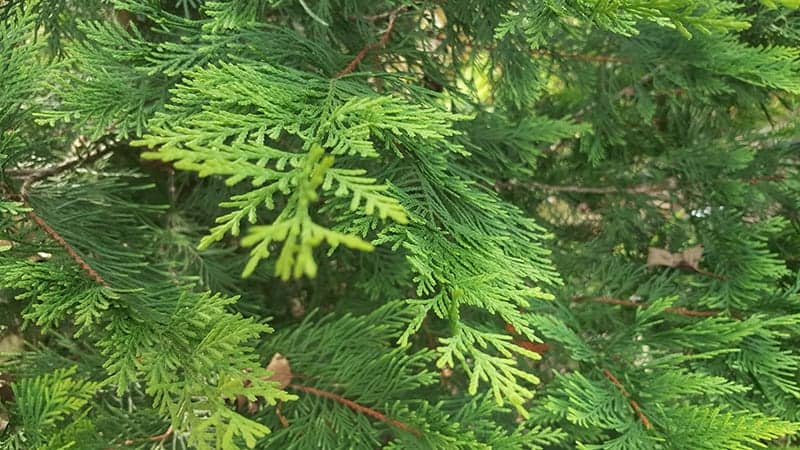
Mature Size: Up to 3 feet tall
USDA Hardiness Zone: 3-8
Light: Full sun to partial shade
This slow-growing arborvitae adds just three or four inches to its height each year, topping out at around three feet after ten years. It forms a loose spherical shape, and has golden-yellow foliage, earning it the name of ‘golden globe.’ It is hardy and therefore suitable for planting in a wide range of climates. It enjoys full sun in cooler regions but should be shaded during summer afternoons at the higher end of the appropriate hardiness zones.
Credit to F. D. Richards
Mature Size: Up to 10 feet tall
USDA Hardiness Zone: 3-8
Light: Full sun
This is one of the rarer types of arborvitae trees, with a dramatic weeping habit. The stiff stems give the pendulous branches a more arching rather than dangling effect. Foliage is a medium green color, growing at a moderate rate of around six inches each year (American Conifer Society).
Credit to F. D. Richards
Mature Size: Up to 8 feet tall
USDA Hardiness Zone: 3-7
Light: Full sun
This variety of arborvitae has a tall and graceful conical shape, typically reaching between six and eight feet tall with a width of between one and three feet. Its foliage is golden-yellow and holds its showy color all year long. It thrives in humid conditions, and cannot tolerate dry soil. Water it generously during spring and summer, and allow rainfall to take care of its moisture needs for the remainder of the year. It works well as a specimen plant or as hedging.
Globe arborvitae trees are a category of Thuja trees that take a naturally spherical structure. Quite amazingly, they self-form into the shape of a globe with no pruning required at all. These make for impressive ornamental plants in a garden with very little effort or input needed from the gardener. They thrive in a wide range of soil types, including poor soil, but as they enjoy moist conditions, it is best to ensure they are grown in a well-draining medium.
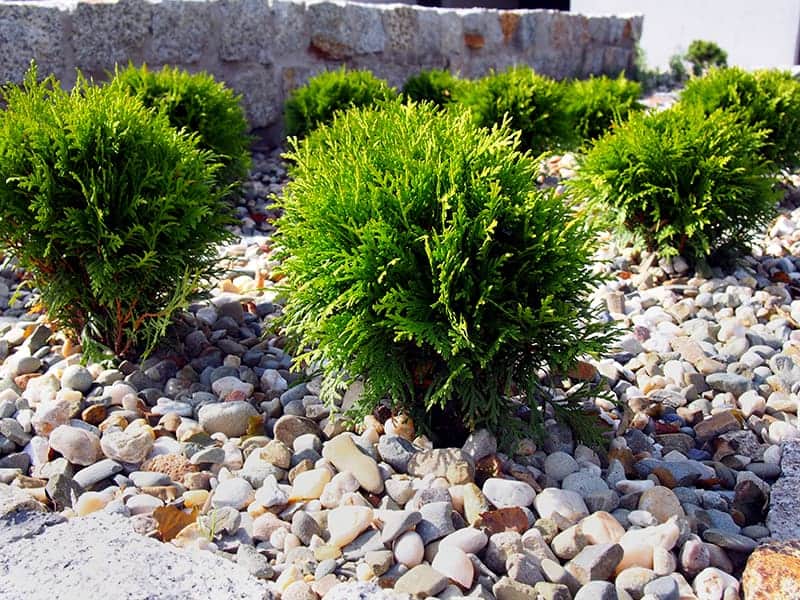
Mature Size: Up to 2 feet tall
USDA Hardiness Zone: 2-7
Light: Full sun
Danica is a slow-growing cute, and cheerful arborvitae, forming perfectly circular mounds. It has a dwarf habit, growing to a maximum of just two feet in height and two feet in width. Due to its small stature, it is ideal for small gardens or even growing in a container. The foliage of this plant is a bright medium green that becomes tinged with golden bronze tips in the winter. This delightful plant, unsurprisingly, has been awarded the Award of Garden Merit from the Royal Horticultural Society.
Credit to F. D. Richards
Mature Size: Up to 10 feet tall
USDA Hardiness Zone: 3-7
Light: Full sun to part shade
This tree forms a large globe shape, sometimes with its width exceeding its height. It can grow to a maximum of ten feet tall and fifteen feet wide. It is renowned for keeping its globular shape even once mature without the need for pruning. It requires a good amount of sun each day to maintain its dense foliage; too much shade will result in a decreased density, and the firm globe shape will be looser and less pronounced. It will tolerate a wide range of soils but prefers a neutral or alkaline moist and well-draining soil. It will not tolerate dry soils and should be kept out of direct wind, which can dry it out.
Mature Size: Up to 2 feet tall
USDA Hardiness Zone: 3-7
Light: Full sun
This dwarf shrub grows up to two feet high and two feet wide, though often it will be smaller even once mature. It has a rounded habit, with compact sprays of golden yellow, almost lime green foliage, which hold their color throughout the year. Its neat size makes it perfect for adding interest and structure to small gardens, but it also works well in containers and in rock gardens. It is very low maintenance, easy to care for, and tolerant of low temperatures.
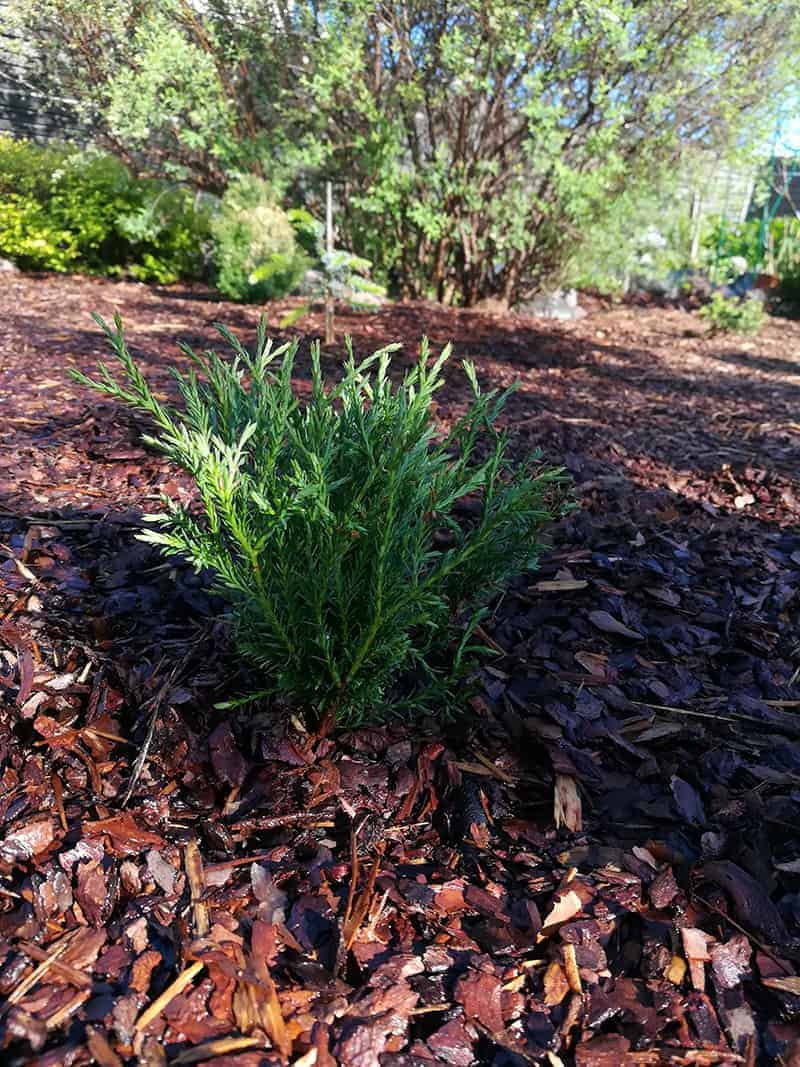
Mature Size: Up to 3 feet tall
USDA Hardiness Zone: 3-7
Light: Full sun
This arborvitae shrub has a dwarf habit, growing in compact spheres that maintain perfect globe shapes with no pruning necessary. The foliage of this plant is blue-green, and has a more delicate appearance than most other arborvitae trees, with a feathery, lace-like appeal. The foliage is as soft as it looks, giving gardens a more gently structured style than its stiff relatives.
Mature Size: Up to 2 feet tall
USDA Hardiness Zone: 3-7
Light: Full sun to partial shade
This cute sphere-shaped arborvitae is a dwarf variety growing up to just two feet in both height and width. It has fresh green foliage spreading out in delicate fans, and keeps its color all year round without turning bronze. It is slow-growing, low maintenance, and reliable, making it a perfect choice for hands-off gardeners. It is also ideal for small spaces and container growing.
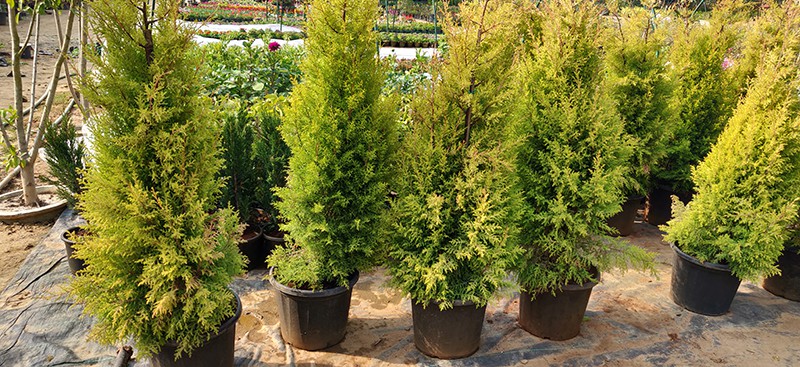
Scientific Name: Thuja occidentalis ‘Smaragd’
Mature Size: Up to 20 feet
USDA Hardiness Zone: 2-7
Light: Full sun
Water: Average water needs
Soil: Well-draining, moist
This cultivar is renowned for its striking emerald green foliage, which maintains its color year-round. It was developed in Denmark and named ‘Smaragd,’ which is the Danish word for ‘emerald.’ It has a semi-dwarf habit, reaching up to 20 feet in height, but most typically it does not exceed 15 feet. It takes the shape of a tall and narrow pyramid, though it can be used amongst others to form a hedge. It enjoys full sun and requires a minimum of 6 hours of sun a day to thrive. Any less than this will cause the tree to become leggy with sparse foliage.
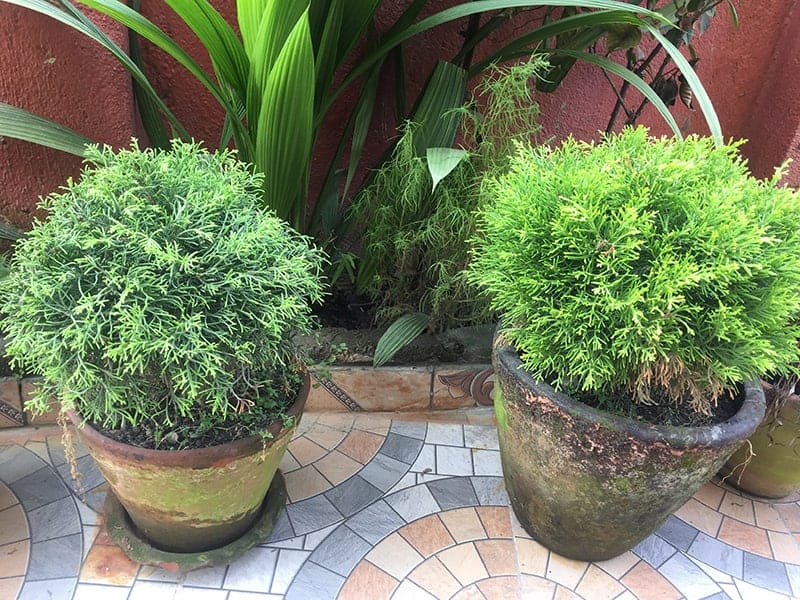
Scientific Name: Thuja plicata x Thuja standishii
Mature Size: Up to 60 feet tall
USDA Hardiness Zone: 5-8
Light: Full sun
Water: Average water needs
Soil: Well-draining
Unlike most arborvitae trees, the green giant is exceptionally fast-growing. It can gain three feet in height per year, reaching maturity at between 50 and 60 feet. It also has an impressively large width of up to 18 feet. The growth can be restricted with frequent pruning, though this tree will need an adequate space to grow. It takes a narrow conical shape with glossy medium green foliage.
Credit to F. D. Richards
Scientific Name: Thuja occidentalis ‘Art Boe’
Mature Size: Up to 15 feet tall
USDA Hardiness Zone: 3-7
Light: Full sun to partial shade
Water: Low to medium water needs
Soil: Well-draining
This type of arborvitae is surprising in that it is quite drought-tolerant, a quality rarely found in these plants. It should be watered generously when young, but once mature, will withstand long periods of drought. That being said, drought will slow the growth considerably, with plants of this type topping out at four feet tall when grown in dry conditions, compared to fifteen feet when grown in moist soil. Restricting irrigation can be a good way of controlling the plant’s height if you don’t want it to get too tall. It prefers cool climates and will struggle to survive drought in warmer regions.